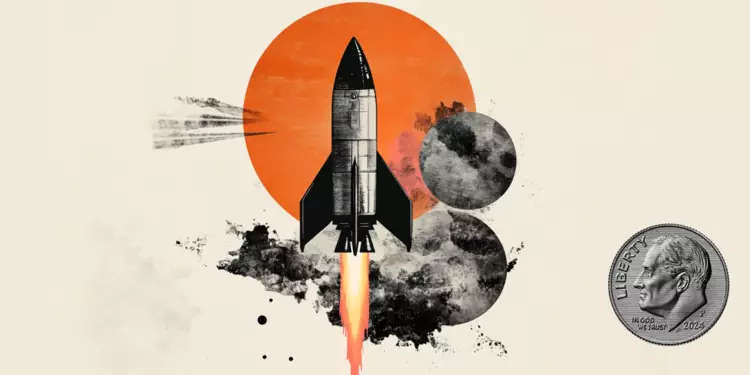The Indian Rupee (INR) finds itself in a precarious situation as it opens the week on a downward trajectory, marking a halt to its previous two days of gains. This fluctuation reflects a blend of domestic economic challenges and external influences, primarily exacerbated by foreign capital outflows and recent monetary policy adjustments by the Reserve Bank of India (RBI).
A pervasive slowdown within India’s economy is considerably affecting the value of the rupee, which has weakened against the US dollar. Contributing factors include a steady outflow of funds by Foreign Institutional Investors (FIIs) as they seek more stable investment environments or higher yields elsewhere. The RBI’s decision to lower interest rates, ostensibly to stimulate domestic demand and investment, paradoxically adds to the pressure on the INR by diminishing its attractiveness to foreign investors seeking better returns.
Furthermore, the anticipated release of the Indian Trade Balance later in the day holds significant weight, as it may reveal further strains in the country’s trade position. Weak trade figures could intensify bearish sentiment towards the rupee, potentially leading to increased volatility and a deeper descent against the dollar.
Despite the INR’s current struggles, there are mitigating factors that may prevent further deterioration. Notably, the RBI’s recent interventions in the forex market—selling US dollars to stabilize the rupee—could offer crucial support. This should not be overlooked; historical data shows that such actions often provide a safety net for the currency, particularly when combined with favorable global oil prices.
As the world’s third-largest oil consumer, India’s reliance on imported crude oil adds another layer of vulnerability to the rupee. However, the recent decline in oil prices could relieve some pressure, as lower costs offer a more favorable trade balance. Expectations of a cheaper import bill could bolster the rupee, countering some negative trends caused by internal economic conditions.
Investor sentiment is also shaped by events transpiring in the United States. Amid expectations for a speech from figures like Federal Reserve officials, Patrick Harker and Michelle Bowman, traders remain on alert. Their comments could signal future policy directions that may impact the dollar’s strength, thus influencing the INR indirectly. Interestingly, the US markets are closed in observance of Presidents’ Day, potentially stymying trading momentum.
Moreover, US economic indicators released recently, such as a surprising dip in retail sales and slower industrial production growth, have caused analysts to call into question the resilience of the American economy. These developments bring an air of uncertainty and could force a reassessment of future interest rate adjustments by the Federal Reserve, which would ripple through global markets and influence currency pairs like USD/INR.
From a technical standpoint, the USD/INR pair reveals a prevailing bullish trend, supported by momentum indicators and moving averages. The rupee appears well-contained above the 100-day Exponential Moving Average (EMA), a sign often interpreted by traders as a bullish indicator. However, with the 14-day Relative Strength Index (RSI) nearing the midline, traders might anticipate a phase of consolidation rather than any swift downward movement.
Immediate resistance is identified around the psychologically important level of 87.00. Should the pair breach this threshold, bulls might target even higher levels, with potential limits reaching near 88.00 or 88.50. Conversely, bearish traders eye a support level near 86.35, with any breaches below this mark signaling a further downside that could expose the INR to a test of deeper weekly lows around the 86.14 range.
The Indian Rupee currently navigates a turbulent economic landscape marked by several interwoven factors. Both domestic and international variables play essential roles; the RBI’s cautious stance to intervene and the fluctuating crude oil prices create a complex scenario for traders.
Looking ahead, it is essential for investors to keep a close watch on macroeconomic indicators such as inflation rates, interest rates, and foreign capital flows. The long-term outlook for the INR will largely hinge on the RBI’s responses to these unfolding events, coupled with global market sentiment and external economic conditions.
While the challenges are significant, the potential for stabilization is evident if supporting factors align favorably. The coming weeks will be critical in revealing whether the Indian rupee can reclaim strength or will continue to be ensnared by the factors currently savaging its position.

